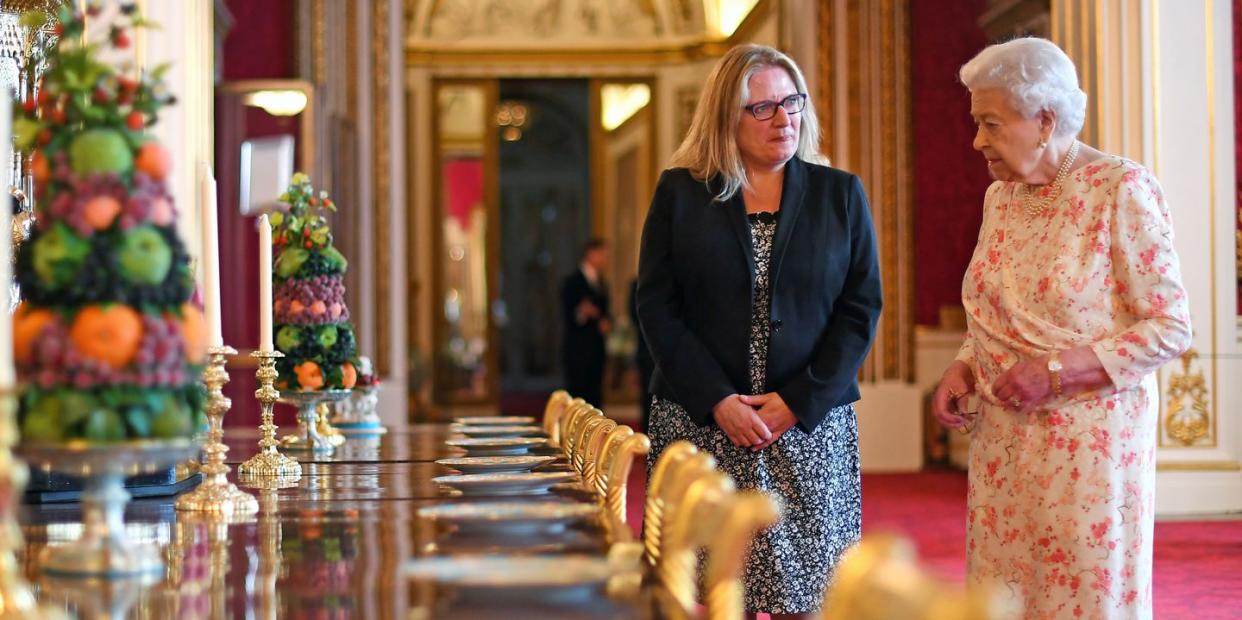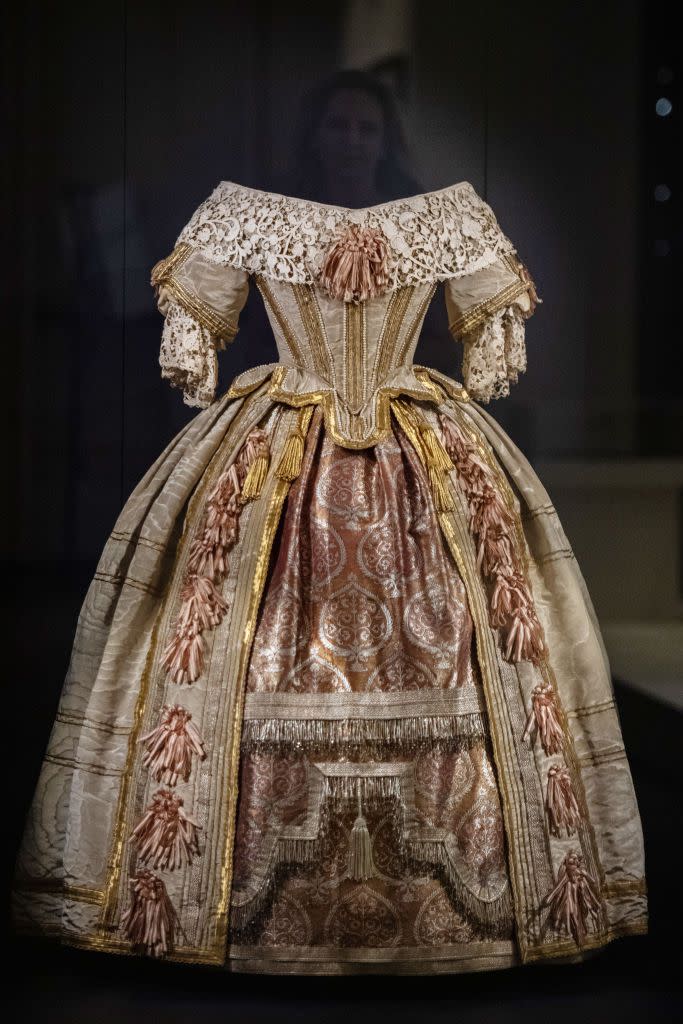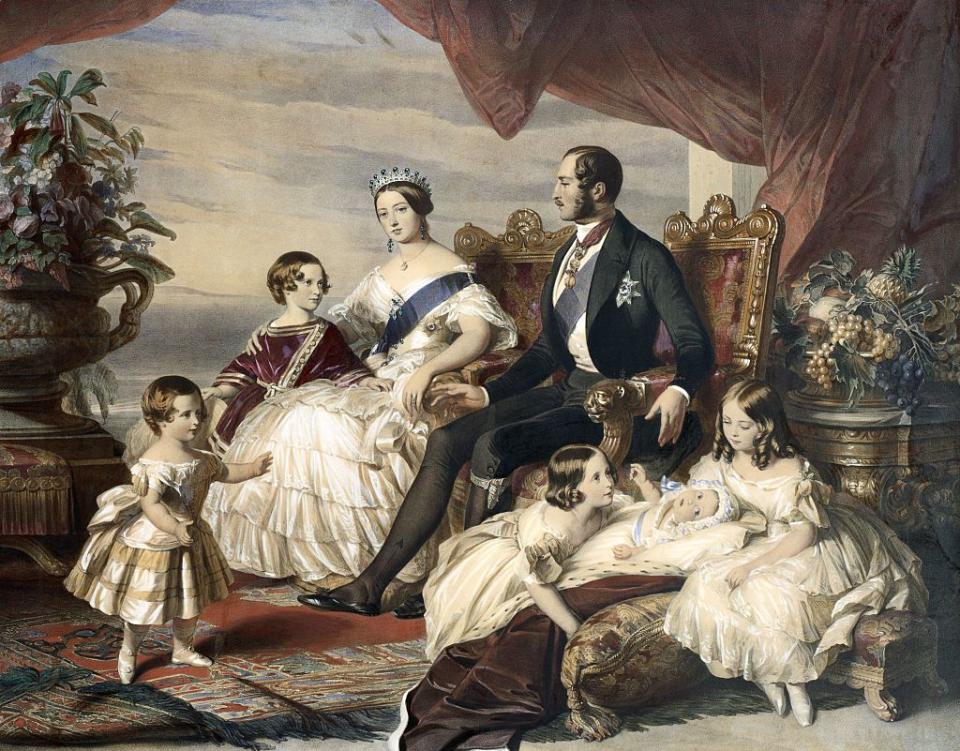Buckingham Palace's New Exhibit on Queen Victoria Highlights How She Transformed the Royal Residence

Buckingham Palace is one of the world’s most iconic buildings and a focal point for British national life. From balcony appearances to state banquets and investitures, the palace is frequently in the background as history is made. And this summer, an exhibition showcases how it all began with Queen Victoria, who transformed an empty royal residence into the most glittering court in Europe.
The centerpiece of Buckingham Palace’s 2019 summer opening is in the Ballroom, where the grand Victorian Ball of 1856, painted by Louis Haghe, has been brought to life using digital projections and a Victorian illusion technique called Pepper’s Ghost.
A hologram shows eight figures dancing to Verdi’s La Traviata while the original decor of the room is projected onto the walls. Curators worked with a Hollywood-based production company on the effects, which also include gold stars and exotic birds projected onto the adjoining Ball Supper Room, mirroring the original decor.
"We have used the most modern form of technology that’s available today to have a new form of storytelling, it’s an immersive experience. It puts you right there in the center," exhibition curator Dr. Amanda Foreman said.
Also on display in the palace’s State Rooms are the embroidered robe made from cloth of gold that a 19-year-old Victoria wore on her Coronation in 1838, her throne, and a costume she wore for the Stuart Ball in 1851 which she described in her journal as “beautifully made.”

More unusual items to be showcased include mementos that she kept of her children such as a casket containing their teeth and marble sculptures of their hands and feet. Noting Queen Victoria’s bad reputation as a mother, exhibition curator Lucy Peter pointed out "Actually what she really disliked was pregnancy. She didn’t not like being a mother and she was incredibly affectionate."
She added, “We know that through what she writes about her children in her journals and drawings she does of her children and the memories and souvenirs that she keeps.”
The artifacts on display showcase the palace’s three functions—a family home for Victoria and Albert and their nine children, a focal point for State occasions, and a space where the public could be invited in.
"We see how they wanted to build a family home," Dr. Foreman said.
"Then we come to the public space, but when we say public it’s not simply about spectacle, it is that thing of being a hostess and opening up your home...Until Queen Victoria and Prince Albert began to do it in a major way it wasn’t thought of as something that a sovereign would do in that expensive, generous, inclusive way that we expect today.”

Dr. Foreman also pointed out that it was Queen Victoria and Albert who constructed the now iconic Buckingham Palace balcony when they built the residence's east front.
"Those balcony appearances that are so important and so scrutinized and have such an emotional resonance today, that is the physical result of Queen Victoria and Prince Albert’s vision," she said. "It’s something that is so part of our national consciousness that we take it for granted, but it requires somebody to think it up."
In summing up the exhibition, Dr. Foreman spoke of Victoria and Albert's influence on the role of the royal family today.
"What I think you can see here in this exhibition is the structure of the modern monarchy and that the traditions that are beloved and that we have come to expect and have dictated our relationship with the monarchy began with Queen Victoria and Prince Albert," she said.
Describing it as “very much a feminist transformation” while pointing out that “Queen Victoria herself would not have used those words,” Dr. Foreman said, “It’s significant that it was a woman who was responsible for these traditions and a woman who defined our nation’s understanding and concept of sovereign power.”
The exhibit opens on July 20, and will run through September 29 of this year. For more information, visit the Royal Collection Trust's website.
('You Might Also Like',)

